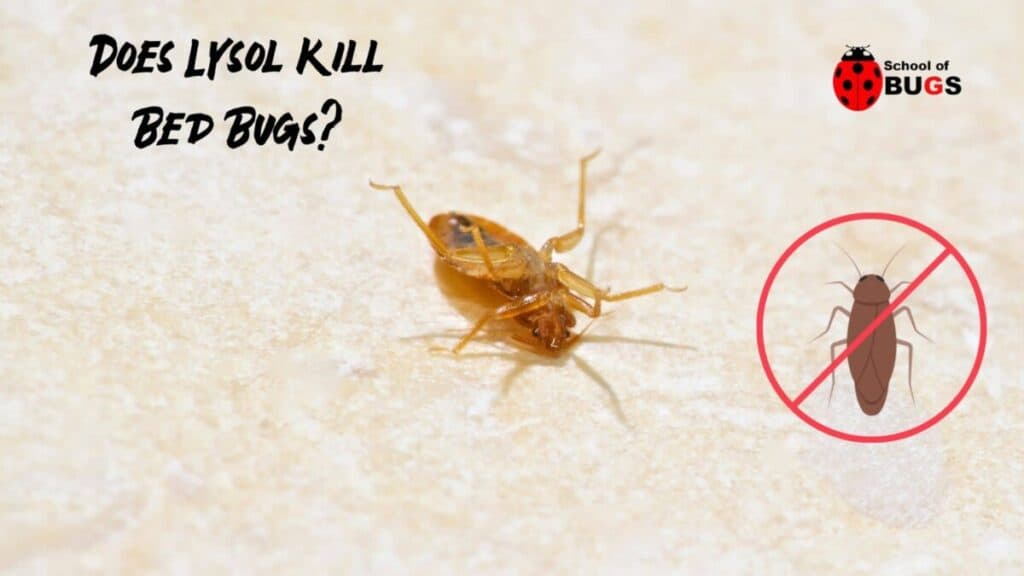
Lysol, a popular disinfectant, might be the first thing you reach for whenever you see a bedbug, but will it kill them?
Lysol will kill bedbugs by interfering with their ability to respirate, causing them to perish within 6-12 hours.
- Does Lysol effectively kill bed bugs?
- How does Lysol affect bed bugs?
- Is Lysol as effective as insecticides?
- How to tackle a bed bug infestation?
Will Lysol Kill Bed Bugs?
When bedbugs invade your home, your first instinct will be to grab the nearest spray you have on hand and douse them in the stuff.
Thankfully, Lysol will almost immediately kill bedbugs thanks to the moisture inhibiting their ability to breathe.
How Lysol Kills Bed Bugs
Lysol is a disinfectant that uses chemicals to clean surfaces and kill germs. In the home, Lysol sprays and wipes see a lot of use for disinfecting surfaces.
When used as an anti-pest solution, Lysol certainly has its uses. Against bedbugs, Lysol causes a chemical irritation on the skin, but that’s not what kills them.
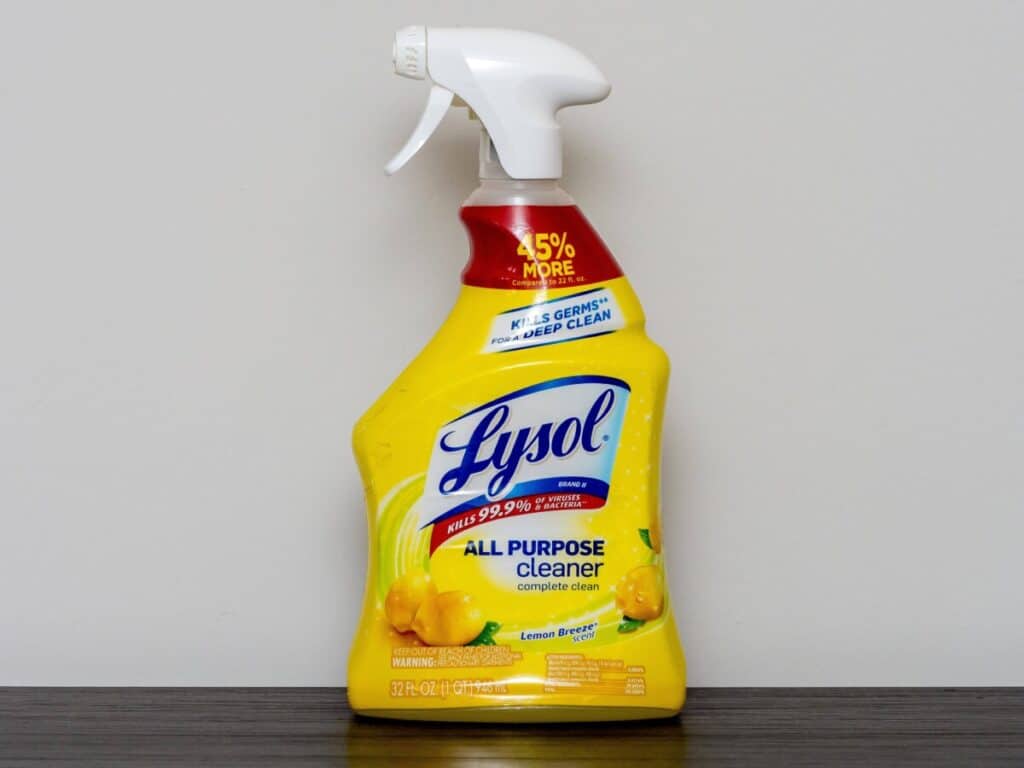
Like other creatures with an open circulatory system, bed bugs do not breathe through their mouth and inhale air into their lungs; instead, they rely on their spiracles, openings on the surface of their body, to breathe in air.
As such, Lysol predominantly kills bed bugs by actually interfering with this breathing process, causing them to be unable to breathe in air and die.
You might be wondering whether you’d get the same effect by simply spraying the bed bugs with water, but there are several reasons why Lysol is a more effective killing agent than plain old water.
First, the surface tension of the chemical components of Lysol certainly makes it more effective at penetrating the pores.
Lysol also absorbs well thanks to its surface tension, enabling it to kill the bugs effectively by physically blocking the spiracles.
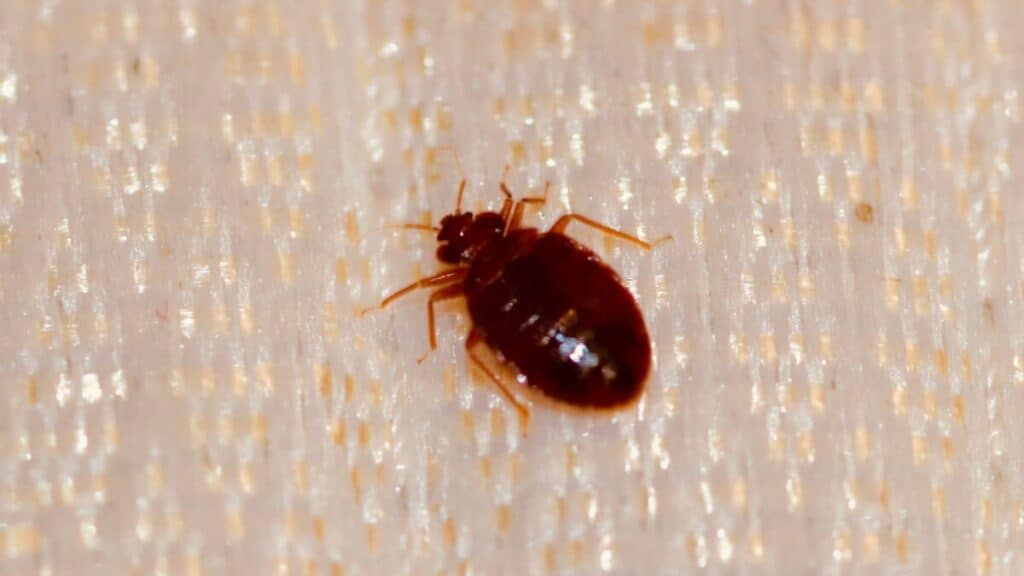
Lastly, and most importantly, Lysol is sticky thanks to benzalkonium chloride and will cling to the insect’s body, unlike water, which will roll off in beads.
As such, Lysol’s stickiness is what makes it effective at stopping bedbugs in their tracks and killing them eventually, although it shouldn’t be confused with insecticides.
How Quickly Can Lysol Kill Bed Bugs?
As mentioned, Lysol kills bed bugs by depriving them of oxygen. While you may think this results in death within five minutes, you’d be wrong.
Humans can only survive hypoxic conditions for a few minutes before the affected person is at risk of dying. Bed bugs, on the other hand, can last for hours before they succumb to this condition.
To clarify, spraying Lysol onto a bed bug will immediately cause it to be incapacitated. That’s because alcohol burns the organs of a bed bug, destroying its physiology and causing it to be unable to move. Unfortunately, it will not die for another 8 or more hours.
Of course, while it’s lying helpless, you could just squash it and finish the job, but it’s certainly not encouraging that the spray doesn’t kill them on contact.
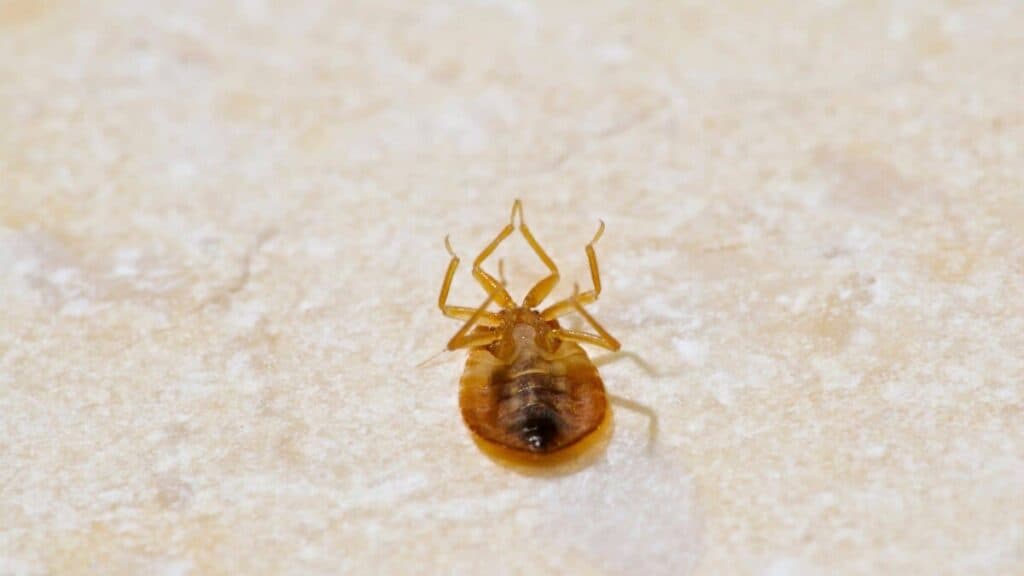
Can Lysol Kill Bedbug Eggs?
One of the worst parts of dealing with a bedbug infestation is the risk of adults laying bedbug eggs.
These can be quite difficult to spot, and sometimes, just spraying down whole areas with disinfectant can cover your bases so that the eggs are destroyed. Lysol is effective at instantly killing bedbug eggs because it has a high alcohol content.
As mentioned, the alcohol is highly toxic to bedbugs, and the helpful stickiness of the compounds in Lysol disinfectant spray ensures that the chemicals will attach to the eggs and kill them almost immediately.
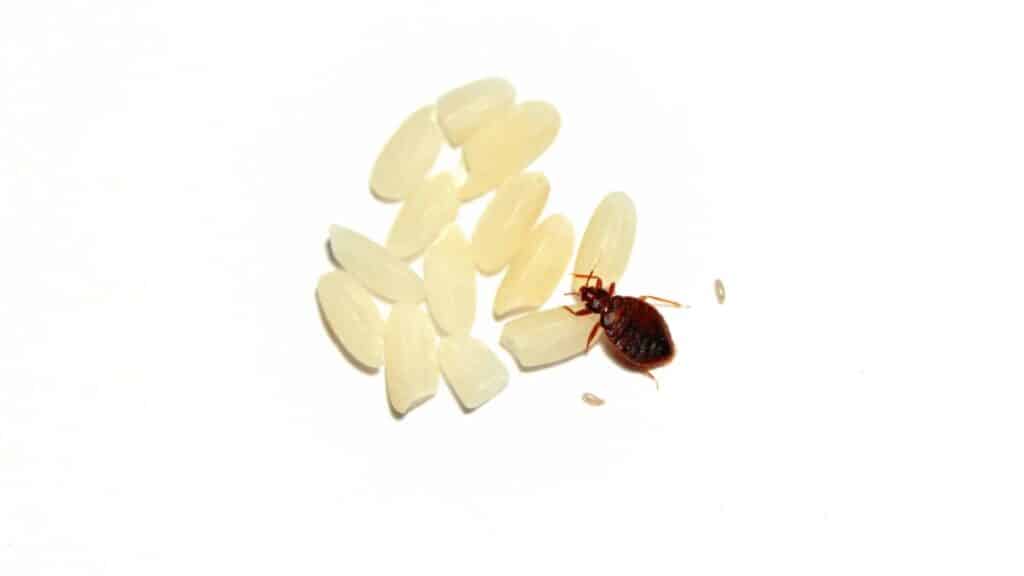
Does Lysol Deter Bed Bugs?
Another important aspect of the war on bugs is deterrence. As soon as you notice bedbugs in your home, you need to take action.
Do nothing, and they may lay eggs, which is the point at which fighting against the rapidly multiplying bedbugs becomes an uphill battle.
Spraying whole areas with Lysol is a prudent defense strategy, since bed bugs aren’t able to survive in the sticky, toxic, and highly unpleasant-smelling environment that Lysol creates. What makes a home a safer place for you makes it much more hazardous for bedbugs.
Lysol is not a cure-all for bedbugs, however, upon detecting that their safe place has been compromised, bedbugs will just choose another.
Spraying stops them from entering an area, but being able to fully cover a space in disinfectant is a tall order.
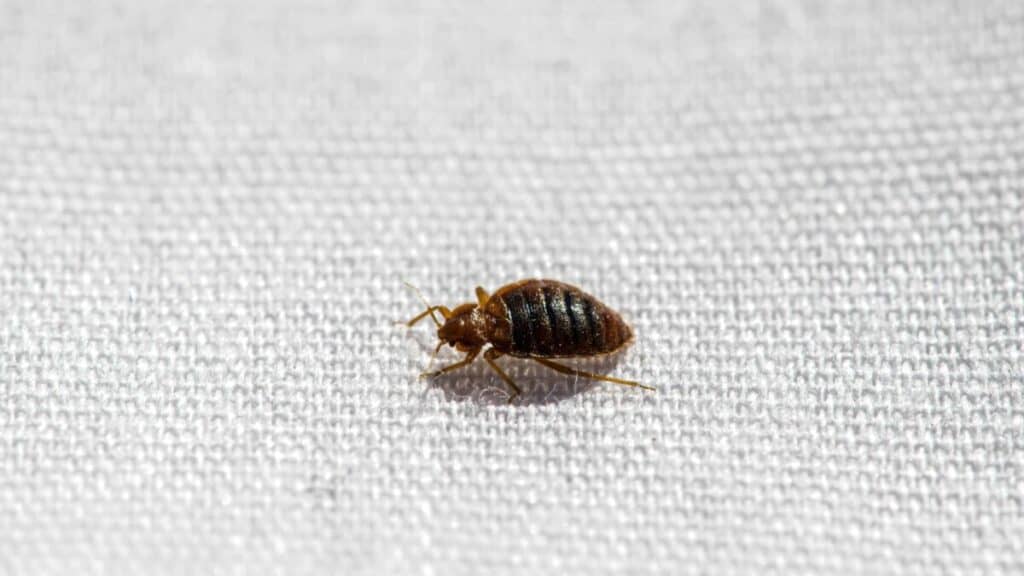
Kill any that you see immediately and spray any corners, nooks, and crannies, including the following spots:
- Wall frames
- Cracks in the wall
- Window frames
- Under furniture
Check thoroughly and apply spray liberally. It’s also a good idea to remove your mattress cover and spray the interior lining completely with Lysol spray.
That will ensure that no bed bugs are hiding in your mattress and allow you to kill off any eggs before they hatch and become a nightmare in your home.
Is Lysol As Good as Insecticide?
Lysol is not the same as an insecticide, and indeed, the term insecticide covers a broad number of solutions under the umbrella of “ways to kill insects.”
Some are made from bacteria, fungi, or viruses that are harmful to insecticides but safe for plants. Most insecticides you use in your home are toxic to humans, pets, and, of course, insects.
Designed to kill insects, larvae, and eggs, toxicants often work by shutting down the nervous system, interfering with oxygen metabolism, disrupting water balance, or halting the insect’s ability to function.
Yeah, that’s a lot of creative ways to kill bed bugs. There’s no doubt that insecticides are the fastest and most effective way to kill bedbugs, immediately paralyzing them, shutting down their neurology, and ending their lives.
With that being said, insecticides might not be the best solution for your home when you’re trying to get rid of bedbugs.
Lysol, while it may not kill them instantly, does burn up the bed bugs from the inside, rendering them inert until they die. That’s true whether sprayed directly or coming into contact with the Lysol disinfectant spray.
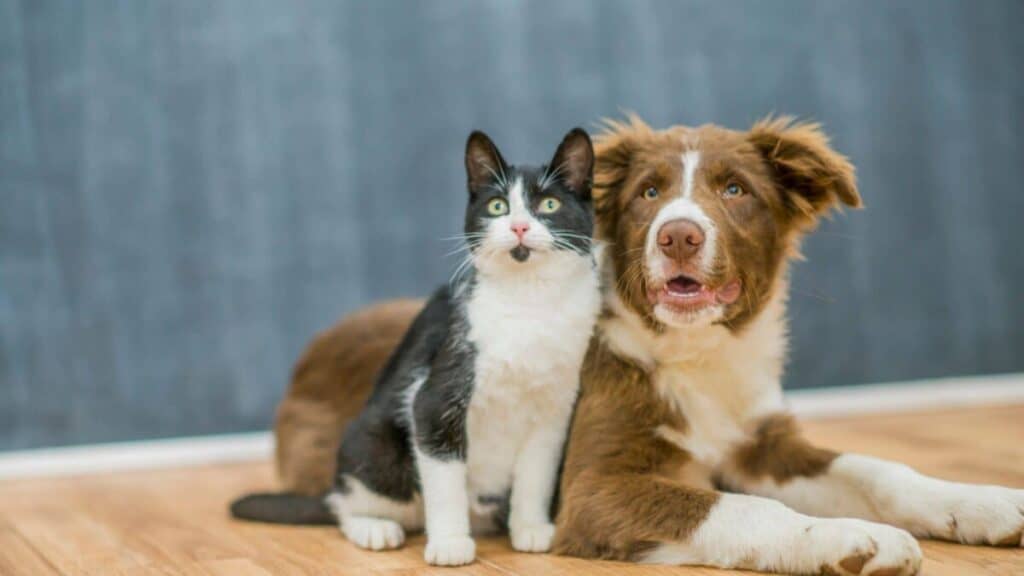
The advantage of this method is that Lysol is much cheaper and less toxic. Make no mistake, though. Lysol is still highly toxic to dogs and cats due to its phenol content.
Cats and dogs ingest phenol by breathing it in near disinfected areas or cleaning their paws. Phenol poisoning can be serious, depending on the amount ingested, and can cause drooling, vomiting, diarrhea, and other dangerous symptoms.
Keep pets away when you’re using Lysol and leave the area to air out for a while before returning.
How to Kill Bedbugs with Lysol
You can take your Lysol in hand and take on the role of a home defender if you’re willing to put in the time and effort.
Assess the Extent of the Damage
The first step in an effective bed bug assault is to assess the extent of the damage. Take a good look around your home, especially in the following places:
- Near the tag on your mattress
- In cracks in your headboard
- Baseboards
- In furniture joints
- Behind loose wallpaper
- Behind paintings and posters
- In the couch cushions
Keep you eye out for live bedbugs, which are red in color as well as their droppings, which look like tiny black dots.
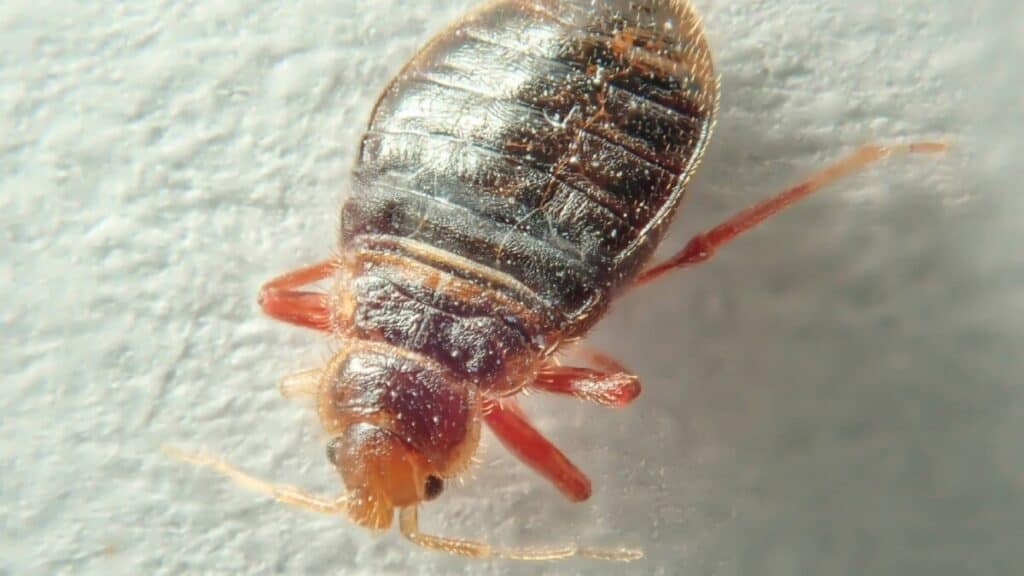
Young bedbugs will shed small yellow eggshells that you can spot, and smushed bedbugs might show up as a reddish blur on your mattress or couch cushions.
Contain the Infestation
Once you’ve assessed where the bedbugs seem to be most prevalent and what areas of the house they haven’t reached, it’s time to go on the attack.
Start by thoroughly vacuuming out your bed, dresser, carpets, and every nook and cranny you can reach. Doing so will trap and often kill bedbugs.
After you’re done, take the contents, seal them in a plastic bag, and throw it away. Thoroughly clean the vacuum.
Next, as a preventative measure, take the Lysol spray and apply it to all the areas you’ve vacuumed. This will discourage bedbugs from visiting these areas, kill any that you may have missed, and prevent bedbugs from accessing these spaces again.
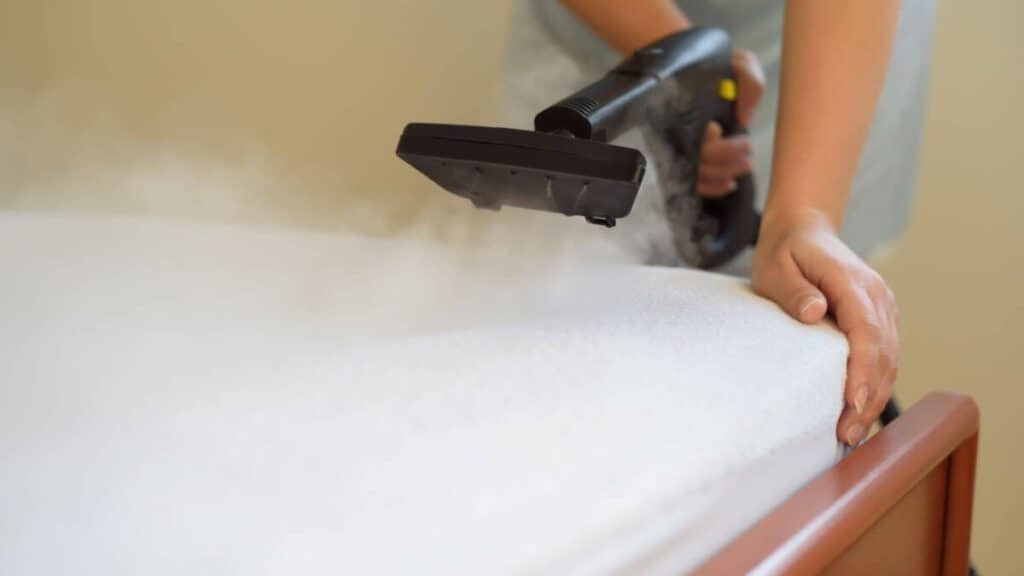
It’s also good practice to run all your linens through the wash at the hottest temperature you have available. High heat will kill bedbugs.
Anything you can’t put in the washing machine can be sprayed with Lysol and left to air dry. If it’s something you can’t spray with a disinfectant, seal it up in a plastic bag and leave it for several months to starve the bed bugs and ensure they die.
Clean Up Shop
Once you’ve taken care of the areas that tend to generate the most interest for bedbugs, your next step is to tidy up and make the area as inhospitable as possible for them.
Clean up anything left on the floor or under your bed and spray it with Lysol. If you can’t, use the vacuum or another anti-bed bug solution to purify the item and ensure that no bed bugs are hiding on it.
Throw out anything you don’t need that could be creating a hiding space for bedbugs. Refer back to step one throughout the process—never take items from a room in which you’ve detected bed bug activity to another room. You run the risk of spreading the infestation and making it worse.
Spray Your Home Thoroughly
Anywhere you’ve seen activity, spray with Lysol. Visit all the rooms you know are infested and spray anywhere and everywhere that bedbugs could hide.
If you have pets, then you should avoid using Lysol altogether and stick with something that’s EPA approved for use around pets. Non-toxic solutions can also be effective.
A steamer, for example, generates enough heat to instantly kill bed bugs (and is a pretty good practice for cleaning up anyway).
Check and Check Again
Once you’ve gone through your home and completed the entire process for getting rid of bed bugs, it’s important to check the areas that were infested every now and again to see if there’s any sign of further activity.
If so, repeat the entire process. It may take several waves to wipe them out entirely. In some cases, you might need to contact a professional exterminator to deal with serious infestations.
Final Thoughts
Bed bugs are susceptible to being killed by Lysol, largely thanks to its sticky nature clogging the spiracles they use to breathe.
Depending on the extent of the problem, Lysol may be a useful tool in handling bed bugs in your home.
Alright, that’s it for this article, here are a few hand-selected articles that you might also find interesting reads:
How to spot bed bugs getting into your bedDoes Roach Spray Kill Bedbugs? The Quick Answer
How Many Bed Bugs Are in a Bed – 3 Different Scenarios
Recent Posts
Tiny Black Bugs in Bathroom NO WINGS: What They Are and What to Do!
Finding tiny black bugs in your bathroom can be uncomfortable, to say the least. Especially if they are persistent, or they appear in very large numbers, which they often like to do. When it...
Tiny Black Bugs in Plant Soil - What Are They & What To Do About It
A short horror story: You get a new houseplant. You do your best to take care of it. You’ve ensured that it has the right soil, the right amount of sun, it gets enough water. And then one day, you...

